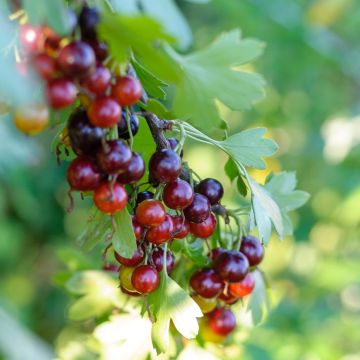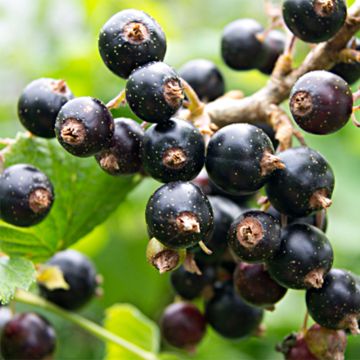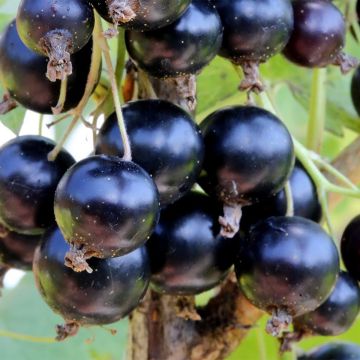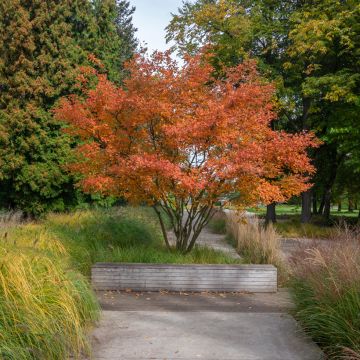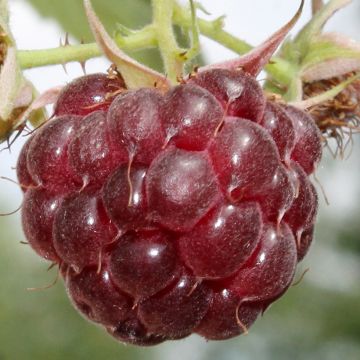

Blackcurrant Giant Boskoop - Ribes nigrum
Blackcurrant Giant Boskoop - Ribes nigrum
Ribes nigrum Géant de Boskoop
Blackcurrant
The plant arrived diseased with lots of brown spots on the leaves. I had to treat it as soon as I received it.
Rachel, 03/07/2024
Special offer!
Receive a €20 voucher for any order over €90 (excluding delivery costs, credit notes, and plastic-free options)!
1- Add your favorite plants to your cart.
2- Once you have reached €90, confirm your order (you can even choose the delivery date!).
3- As soon as your order is shipped, you will receive an email containing your voucher code, valid for 3 months (90 days).
Your voucher is unique and can only be used once, for any order with a minimum value of €20, excluding delivery costs.
Can be combined with other current offers, non-divisible and non-refundable.
Home or relay delivery (depending on size and destination)
Schedule delivery date,
and select date in basket
This plant carries a 6 months recovery warranty
More information
We guarantee the quality of our plants for a full growing cycle, and will replace at our expense any plant that fails to recover under normal climatic and planting conditions.
Description
The Boskoop Giant Blackcurrant is an early variety, with berries harvested from early July. It is a hardy and vigorous bush, resistant to powdery mildew, moderately productive, producing large fruits with a tangy flavour, appreciated for their fragrance when fully ripe. Its late flowering makes it a good pollinator for the 'Noir de Bourgogne' variety. Its foliage is highly aromatic when crushed. Easy to grow in heavy, moist, deep soil, in non-scorching sun, protected from spring frosts.
Ribes nigrum belongs to the Grossulariaceae family. It is a deciduous bush related to currants, native to regions ranging from the Pyrenees to central Asia. The blackcurrant naturally grows in cool woods in northeastern Europe. It has been cultivated since the 16th century.
The 'Boskoop Giant' cultivar is an old self-fertile Dutch variety. It forms a vigorous bush with upright tufted growth, reaching a height of 1.50m (5ft) with a spread of 1m (3ft). The plant reaches maturity in three years. The leaves, deciduous, are large, flat, with three to five lobes with toothed edges, bright green and pleasantly fragrant when crushed. Leaves, fruits, and buds are intensely fragrant, due to the presence of glands containing essential oils, which are extracted from the buds for perfumery. The bark is smooth and reddish on young branches, darkening with age. Flowering takes place in April-May, in the form of small flowers arranged in pendulous clusters that are often not very visible. It is followed by the formation of large berries, ripening in late June to early July, with black and shiny skin, gathered in long clusters. It bears fruit quickly, with the first harvest expected one year after planting. The fruits have a slightly acidic, aromatic flavour when fully ripe, and are very juicy. The yield is average, about 4kg per plant.
Plant the Boskoop Giant Blackcurrant in the vegetable garden, alongside the main path, or mixed in flowering shrub borders. The blackcurrant is rich in tannins, aromas, vitamin C, and C2. It can be consumed fresh in a mixed berry salad, as juice, syrup, jams or jellies, in pastries (pies, charlottes, and sorbets), and in cooking (puree, coulis). It is used to make liqueurs and nectars. Blackcurrants can be dried or frozen for winter storage. In a blackcurrant plantation, as in any plantation, it is important to alternate varieties and species when space allows: pollination will be favoured, even if the variety is self-fertile.
According to some authors, the name "cassis" is of Arabic origin, derived from the word "Ribas". Today, blackcurrant is increasingly being recognised in the world of phytotherapy. Diuretic, analgesic, and antibiotic, it is increasingly being proposed as an alternative solution to allopathy for the treatment of many pathologies.
Blackcurrant Giant Boskoop - Ribes nigrum in pictures


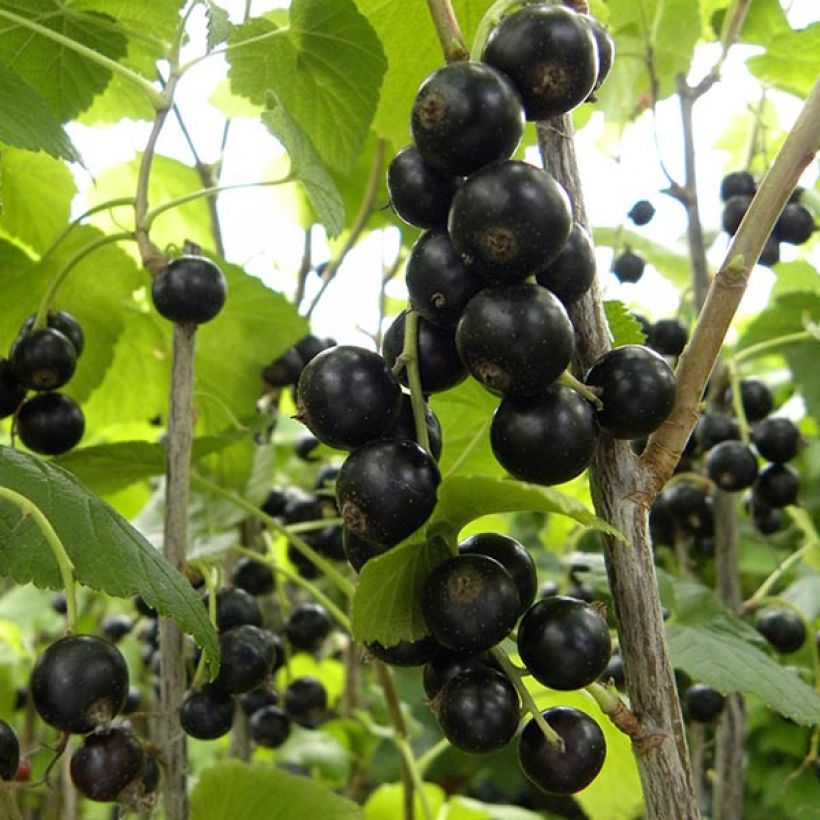

Plant habit
Fruit
Flowering
Foliage
Botanical data
Ribes
nigrum
Géant de Boskoop
Grossulariaceae
Blackcurrant
Cultivar or hybrid
Other Blackcurrant bush
View all →Planting and care
Plant the 'Giant de Boskoop' blackcurrant from October to March, in ordinary, deep, even heavy and clayey soil, without too much limestone, cool but not constantly wet. Non-direct sunlight, or partial shade, in a place sheltered from strong winds, will give good results. The blackcurrant tree dislikes heat and drought, it is said to be better suited to cooler climates rather than southern Europe. An organic fertiliser input at the start of vegetation will support fruit production and plant health. It is an accommodating bush, not very sensitive to diseases. It has a few enemies, such as scale insects and mites, which can be eliminated by winter treatment. In March-April, before flowering, a fungicide can be sprayed. In June-July, the harvest will be protected with nets to counter the birds. In a blackcurrant plantation it is important to alternate varieties when space allows: pollination will be favoured, even for self-fertile varieties, as soon as two different varieties are present. Count one pollinator for every four plants.
Planting period
Intended location
Care
Planting & care advice
-
, onOrder confirmed
Reply from on Promesse de fleurs
Similar products
Haven't found what you were looking for?
Hardiness is the lowest winter temperature a plant can endure without suffering serious damage or even dying. However, hardiness is affected by location (a sheltered area, such as a patio), protection (winter cover) and soil type (hardiness is improved by well-drained soil).

Photo Sharing Terms & Conditions
In order to encourage gardeners to interact and share their experiences, Promesse de fleurs offers various media enabling content to be uploaded onto its Site - in particular via the ‘Photo sharing’ module.
The User agrees to refrain from:
- Posting any content that is illegal, prejudicial, insulting, racist, inciteful to hatred, revisionist, contrary to public decency, that infringes on privacy or on the privacy rights of third parties, in particular the publicity rights of persons and goods, intellectual property rights, or the right to privacy.
- Submitting content on behalf of a third party;
- Impersonate the identity of a third party and/or publish any personal information about a third party;
In general, the User undertakes to refrain from any unethical behaviour.
All Content (in particular text, comments, files, images, photos, videos, creative works, etc.), which may be subject to property or intellectual property rights, image or other private rights, shall remain the property of the User, subject to the limited rights granted by the terms of the licence granted by Promesse de fleurs as stated below. Users are at liberty to publish or not to publish such Content on the Site, notably via the ‘Photo Sharing’ facility, and accept that this Content shall be made public and freely accessible, notably on the Internet.
Users further acknowledge, undertake to have ,and guarantee that they hold all necessary rights and permissions to publish such material on the Site, in particular with regard to the legislation in force pertaining to any privacy, property, intellectual property, image, or contractual rights, or rights of any other nature. By publishing such Content on the Site, Users acknowledge accepting full liability as publishers of the Content within the meaning of the law, and grant Promesse de fleurs, free of charge, an inclusive, worldwide licence for the said Content for the entire duration of its publication, including all reproduction, representation, up/downloading, displaying, performing, transmission, and storage rights.
Users also grant permission for their name to be linked to the Content and accept that this link may not always be made available.
By engaging in posting material, Users consent to their Content becoming automatically accessible on the Internet, in particular on other sites and/or blogs and/or web pages of the Promesse de fleurs site, including in particular social pages and the Promesse de fleurs catalogue.
Users may secure the removal of entrusted content free of charge by issuing a simple request via our contact form.
The flowering period indicated on our website applies to countries and regions located in USDA zone 8 (France, the United Kingdom, Ireland, the Netherlands, etc.)
It will vary according to where you live:
- In zones 9 to 10 (Italy, Spain, Greece, etc.), flowering will occur about 2 to 4 weeks earlier.
- In zones 6 to 7 (Germany, Poland, Slovenia, and lower mountainous regions), flowering will be delayed by 2 to 3 weeks.
- In zone 5 (Central Europe, Scandinavia), blooming will be delayed by 3 to 5 weeks.
In temperate climates, pruning of spring-flowering shrubs (forsythia, spireas, etc.) should be done just after flowering.
Pruning of summer-flowering shrubs (Indian Lilac, Perovskia, etc.) can be done in winter or spring.
In cold regions as well as with frost-sensitive plants, avoid pruning too early when severe frosts may still occur.
The planting period indicated on our website applies to countries and regions located in USDA zone 8 (France, United Kingdom, Ireland, Netherlands).
It will vary according to where you live:
- In Mediterranean zones (Marseille, Madrid, Milan, etc.), autumn and winter are the best planting periods.
- In continental zones (Strasbourg, Munich, Vienna, etc.), delay planting by 2 to 3 weeks in spring and bring it forward by 2 to 4 weeks in autumn.
- In mountainous regions (the Alps, Pyrenees, Carpathians, etc.), it is best to plant in late spring (May-June) or late summer (August-September).
The harvesting period indicated on our website applies to countries and regions in USDA zone 8 (France, England, Ireland, the Netherlands).
In colder areas (Scandinavia, Poland, Austria...) fruit and vegetable harvests are likely to be delayed by 3-4 weeks.
In warmer areas (Italy, Spain, Greece, etc.), harvesting will probably take place earlier, depending on weather conditions.
The sowing periods indicated on our website apply to countries and regions within USDA Zone 8 (France, UK, Ireland, Netherlands).
In colder areas (Scandinavia, Poland, Austria...), delay any outdoor sowing by 3-4 weeks, or sow under glass.
In warmer climes (Italy, Spain, Greece, etc.), bring outdoor sowing forward by a few weeks.































